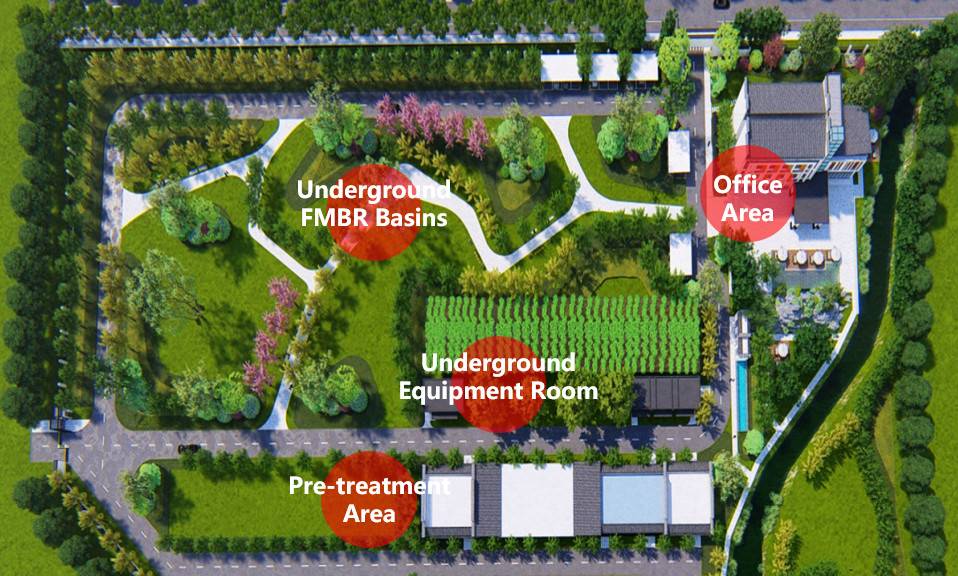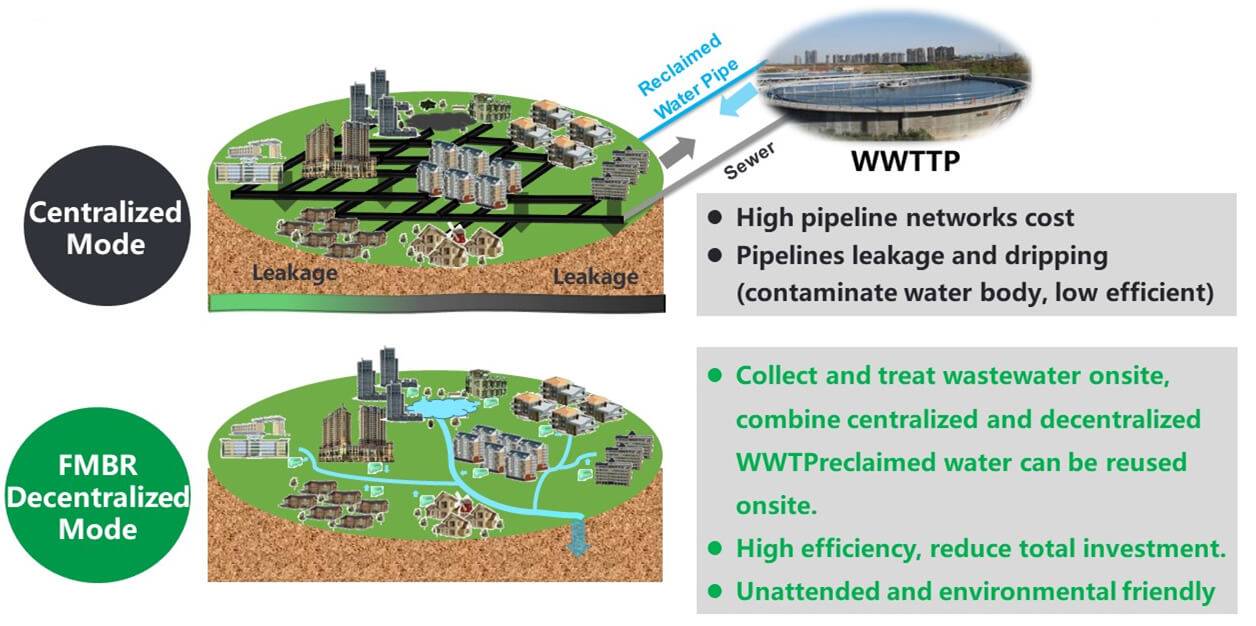What is FMBR Technology?
FMBR (Facultative Membrane Bio-Reactor) is an advanced wastewater treatment technology that integrates biological treatment, membrane separation, and sludge reduction into a single process. By creating a facultative environment, FMBR cultivates diverse microorganisms that establish a microbial food web, enabling simultaneous removal of carbon (C), nitrogen (N), and phosphorus (P) with minimal sludge production.
Unlike traditional wastewater treatment, FMBR leverages endogenous respiration to achieve ultra-low organic sludge discharge, significantly reducing sludge handling and operational costs. The membrane separation technology ensures superior effluent clarity with extremely low suspended solids and turbidity. Additionally, the system's long sludge retention time (SRT) and low dissolved oxygen (DO) conditions foster the coexistence of nitrifiers, ammonia-oxidizing organisms (AOA, Anammox), and denitrifiers, achieving highly efficient biological nutrient removal.
FMBR also integrates real-time monitoring, cloud-based operation & maintenance (O&M), and remote management, enabling smart, automated, and decentralized wastewater treatment solutions with minimal human intervention.
Characteristics of FMBR
● Simultaneous removal of organic carbon, nitrogen and phosphorus
● Less organic residual sludge discharging
● Excellent discharge quality
● Minimum chemical addition for N & P removal
● Short construction period
● Small footprint
● Low cost/low energy consumption
● Reduce carbon emissions
● Automated and unattended
FMBR WWTP Construction Types
Package FMBR Equipment WWTP (For decentralized solutions)
✅Prefabricated & Integrated: Easy setup with minimal civil work
✅Flexible applications: Ideal for scenic spots, hotels, schools, residential areas
✅Quick deployment: Small footprint & fast construction
Concrete FMBR WWTP (For large-scale municipal projects)
✅Blends into urban environments: Eco-friendly design, no visual impact
✅Efficient treatment: Ideal for large municipal wastewater projects
✅Space-saving: Underground & integrated into green spaces

Eco-Friendly & Space-Saving Wastewater Treatment
Designed to seamlessly integrate into urban landscapes, the Concrete FMBR WWTP minimizes environmental impact while maximizing efficiency. Unlike traditional treatment plants, this system is built underground, preserving green spaces and enhancing aesthetics.
- Underground FMBR Basins: Reduces land occupation, allowing for park-style ecological integration.
- Underground Equipment Room: Keeps operational infrastructure hidden, maintaining visual harmony.
- On-Site Pre-Treatment: Ensures high-quality wastewater treatment before final discharge.
- Sustainable Design: Ideal for municipalities seeking efficient, low-impact wastewater solutions.
FMBR Treatment Mode
Traditional vs. FMBR: A Smarter Alternative
Traditional WWTP Challenges:
❌Requires multiple tanks & complex infrastructure → High cost & large footprint
❌Produces large amounts of sludge → Leads to odor issues & disposal concerns
❌Often located far from residential areas due to pollution risks
❌Expensive sewer network investment (up to 80% of total cost)
FMBR's Smarter Approach:
✅ Compact Design – Reduces footprint & shortens construction time
✅ Minimal Sludge Production – Almost odor-free & eco-friendly
✅ Cost-Effective – Requires less infrastructure investment
✅ Suitable for Urban & Rural Areas – Can be integrated within communities
Decentralized Treatment: On-Site, Sustainable Solutions
Why Decentralized Treatment?
1️⃣"On-Site Collect, Treat & Reuse" minimizes pipeline infrastructure
2️⃣Highly compact & pre-fabricated for faster installation
3️⃣Reduces residual organic sludge → Almost no odor
4️⃣Ideal for small communities, hotels, and commercial areas
Better for the Environment & Cost-Efficient
1️⃣Less sewer system investment
2️⃣More localized control over wastewater treatment
3️⃣Reduces leakage risks & environmental contamination


Future-Ready Wastewater Treatment for Urban Living
Designed for seamless integration into residential areas, the Centralized FMBR WWTP prioritizes both functionality and community well-being. Unlike traditional WWTPs that require large footprints and generate odors, this system is built with minimal land occupation, making it an ideal choice for urban developments.
- Urban Integration: Wastewater treatment is incorporated into green spaces, improving local aesthetics and environmental quality.
- Minimal Disruption: Underground FMBR basins and equipment rooms eliminate noise and odor concerns, ensuring a comfortable environment for residents.
- Efficient Water Reuse: The treated water can be reclaimed for landscape irrigation and ecosystem support, promoting resource sustainability.
- Smart Automation: The system operates with minimal human intervention, leveraging IoT-based monitoring for optimized performance.

